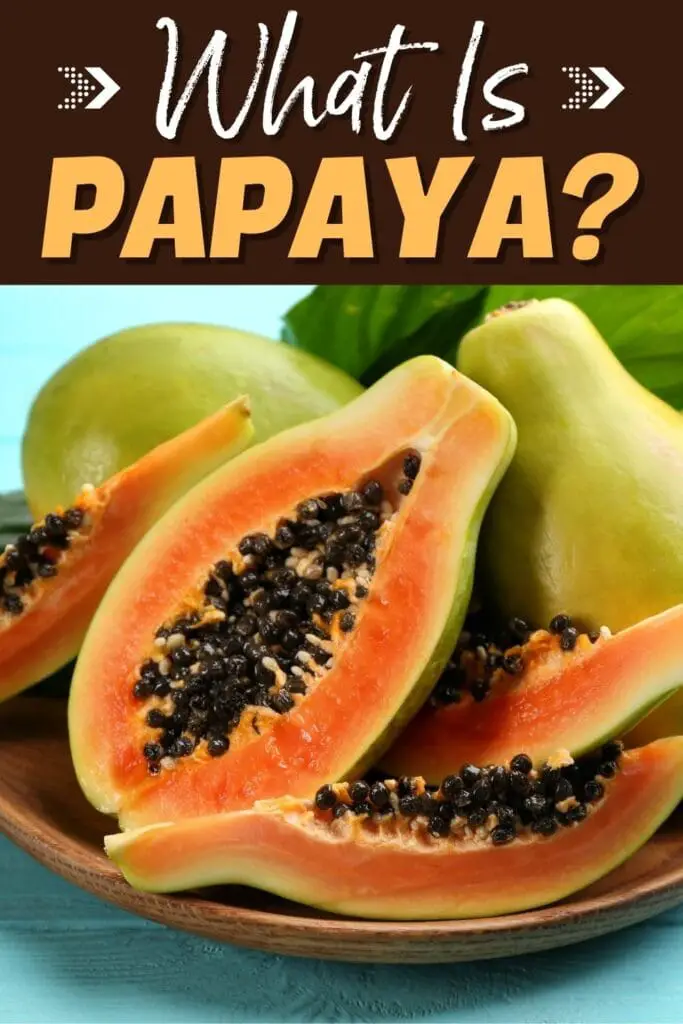



what is papaya? It is the gift that has been missing in your life!
Do you love to try exotic and tasty fruits? Then papaya should be at the top of your list!
Do you want to save this weblog post? Enter your email now and we'll send the article straight to your inbox!
Papaya is a sweet and juicy fruit with tantalizing flavors that are sure to make your taste buds sing.
It is native to the tropics of Central America and Mexico.
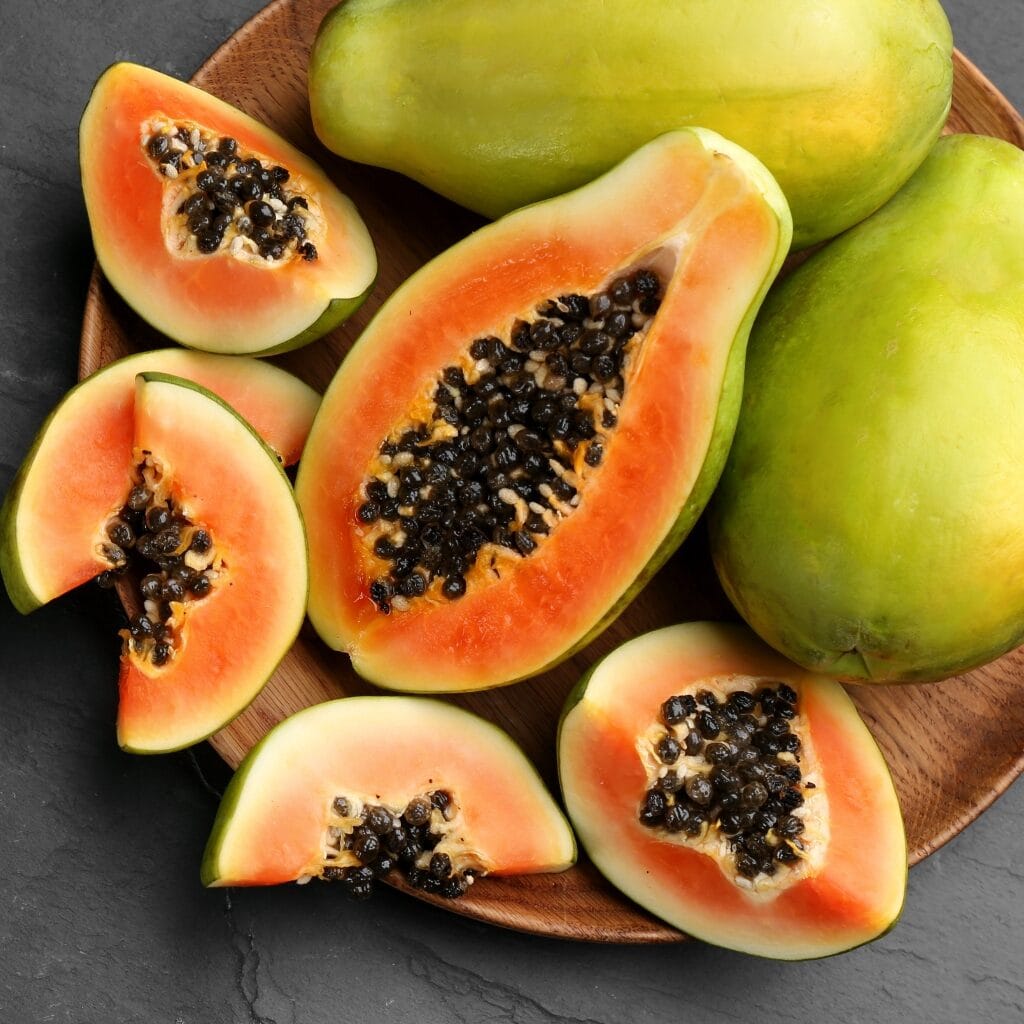
It is a fantastic fruit packed with a variety of nutritional benefits.
That makes it, unsurprisingly, a great addition to any diet.
Today, we'll explore what the papaya truly has to offer.
We'll find out what it is, how it tastes, its health benefits, and more. Keep scrolling!
What is papaya?
(scientific name: Carica papaya)
Papaya is a more exotic fruit.
You've probably seen it quite often at your local grocery store, even if you didn't know what it was.
Most are long, vaguely pear-shaped, and typically yellow-orange in color.
(When immature, they are a bright, earthy green.) Other varieties may be red or pink.
They taste sweet, and even their seeds are edible! (Don't eat the skin though!)
Do you want to save this weblog post? Enter your email now and we'll send the article straight to your inbox!
The fruits thrive in tropical times.
They are popular throughout Mexico, Central and South America, and many parts of Asia.
They are also regularly farmed in Hawaii.
Those sold commercially usually weigh between one and 3 pounds.
They are also between 4 and 6 inches long. However, the fruit can be much larger. (Up to twenty pounds!)
You can eat it raw or cook it. Either way, it's an exquisite tropical delicacy.
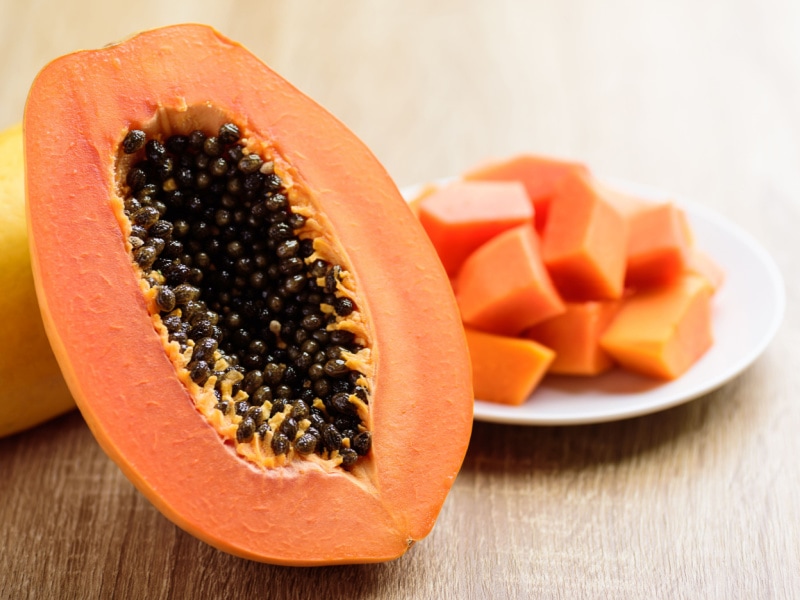
What does papaya taste like?
Papayas have a sweet, tropical flavor that somewhat resembles melon.
Their orange flesh is soft and buttery, and they are impressively juicy.
Most people describe them as "refreshing," which is accurate.
They give you that feeling of hydration that when eating watermelon.
However, they do not taste like watermelons.
They are softer, closer to a sweet melon mixed with some sort of exotic tropical fruit.
Most people who try them really enjoy them.
Papaya Health Benefits
In addition to having great flavor, papayas have many additional health benefits.
First of all, they are about XNUMX% water.
So if you're having trouble staying hydrated, try adding more papaya to your diet.
Due to their high water content, they also make you feel fuller.
That can assist with weight loss and help control blood sugar levels. It also improves intestinal health and aids in digestion.
Papayas are also packed with antioxidants and can help boost the immune system.
Here are other potential benefits of regular papaya consumption:
- Potentially reduces the risk of certain types of cancer and Alzheimer's disease.
- Increases heart health
- Promotes healthy eyes.
- Fight inflammation
Each serving of papaya is also packed with things that are good for the body.
For example, you can get ten percent of your daily fiber and one hundred and six percent of your daily vitamin C from papaya!
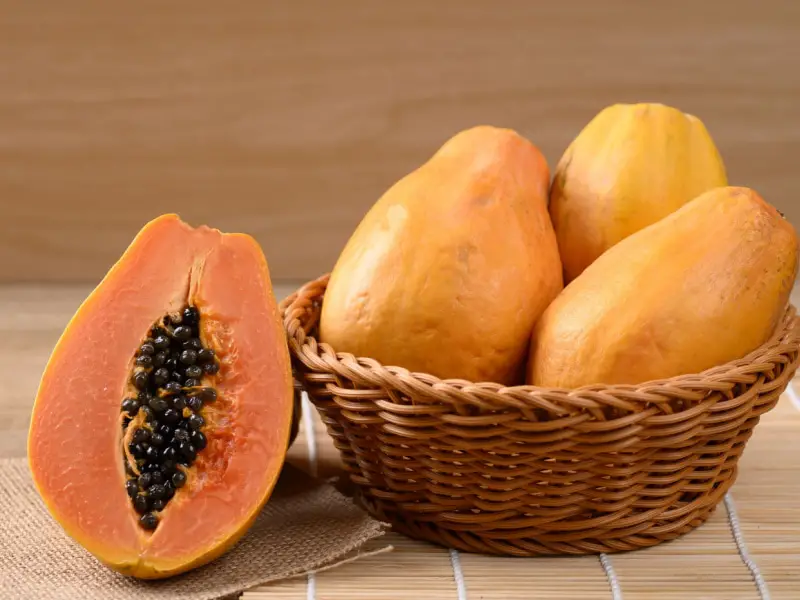
How to eat and cook with papayas
Unlike many fruits, you can eat papaya before it ripens.
It's less sweet this way, but it's generally fine if you cook with it. If you want to eat it plain, wait until it is fully ripe.
Here are the first steps to trimming and eating ripe papaya:
At this point, you have a few different options.
You can trim the pulp of the papaya with a knife and cut it into cubes. You can also use a melon baller.
Finally, you can simply eat it straight from the fruit with a spoon. It is totally up to you!
To cook papaya, follow exactly the same steps listed previously.
Then you can throw it in a blender and puree it. You can also sauté, sauté, bake, or grill it.
You can even transform it into jams and curries. It is a very versatile fruit.
As for the seeds, they have a slightly spicy and bitter taste. This makes them an interesting addition to salads.
You can also grind them and use them as pepper.
How to choose a good papaya
Choosing the right papaya depends first on your needs.
If you want a green papaya, look for the ones with the brightest green skin. They must also be extremely firm.
Finding ripe papaya is a bit more difficult. Will you eat the fruit right away?
If so, look for ones with very little or no green in the skin. They should be softer than green papayas but not too soft.
If you plan to eat it a few days later, choosing one with a bit of green is not a bad idea.
That means that it still has a few days before it is fully ripe.
Try to avoid papayas that are soft to the touch. They are probably overripe and spoil quickly.
If you've left one to soften at home, use it to make smoothies instead of eating it raw.
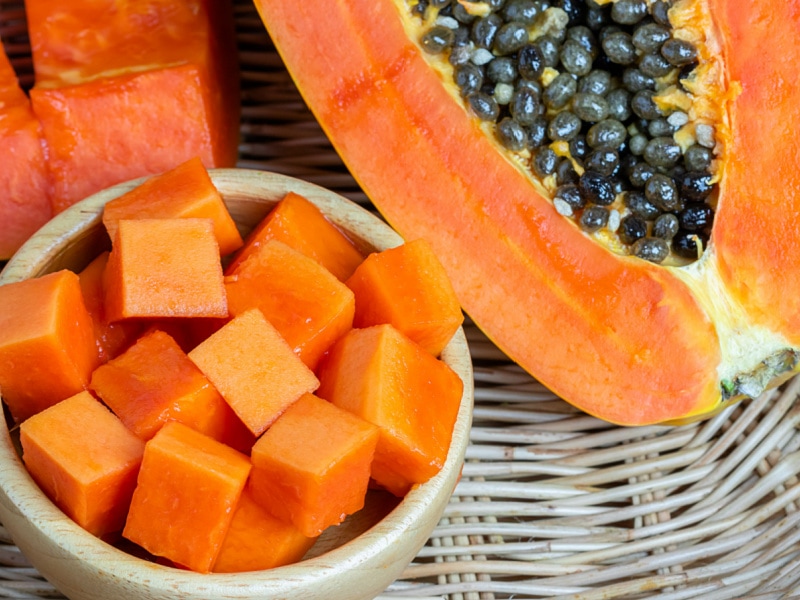
How to save
If you purchased a papaya and are waiting for it to mature, leave it outside.
Putting it in the fridge will slow down the ripening process. Instead, leave it somewhere in your kitchen for a repeat.
You can also put it in a brown paper bag to speed up the process.
If you have leftovers or fully ripe fruit to save, that's another story. Those should go in the fridge.
Wrap whole, untrimmed fruits in a plastic bag first.
Put leftovers or cut papayas in an airtight container.
You can also freeze surplus papaya, but the process is different. Follow these steps to properly freeze your papaya:
Once frozen, thawed papaya works best for smoothies or cooking.
If you want to eat it raw, do so once it's partially thawed.
Fully thawed papaya is sometimes too soft.
